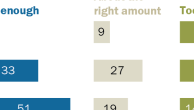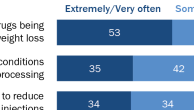What does this mean for cancer treatment and cancer research?
In addition to tracking the intersection of health care and technology through survey research, I scout for examples of participatory medicine.15
Here are a few recent examples:
- The Palo Alto Medical Foundation created a Cancer Patient Advisory Council which helped develop standards for supporting cancer survivors, as well as adding to the Foundation’s plans for information sharing, education, and program development.16
- Patient-experts attend medical conferences, disseminating the scientific advances and setbacks to a wide online audience.17
- The Institute of Medicine’s National Cancer Policy Forum included insights from patient-driven research organizations such as ACOR, PatientsLikeMe, and the Chordoma Foundation in its report, “A Foundation for Evidence-Based Practice: A Rapid Learning System for Cancer Care.”18
But the most important example is now ancient history, at least in internet terms.
Here is the story of the Life Raft Group, a group of cancer patients who gathered together online and played a significant role in the trial and approval process for Gleevec:19
It was the summer of 2000 and an unprecedented series of events would begin to reshape our lives. A new diagnostic test to determine the presence of an enzyme called c-kit ushered in a clinical diagnosis for a cancer called Gastrointestinal Stromal Tumor (GIST). That was the good news: we had our very own cancer. The bad news was that it was particularly deadly and belonged to a family of cancers called soft tissue sarcomas.
The next event was a new oral targeted drug called STI571 that a few clinicians thought might help. This drug had just achieved an amazing breakthrough with another rare cancer called chronic myelogenous leukemia. And a clinical trial to test this drug on GIST patients was to begin in Boston, Philadelphia and Portland, Oregon, initially for a total of 30 patients.
That confluence of unknown factors-a new cancer diagnosis, a new drug and a new clinical trial was the catalyst for a small number of patients to create an informal organization called the Life Raft Group. Using an internet community called a listserv, run by a remarkable organization called ACOR, we began exchanging information about our cancer and this new drug.
Within a few months our new fledgling newsletter reported that about 85% of the first patients in the clinical trial were benefiting from this drug, either through rapid and significant tumor shrinkage or through tumor stability. Both the new treatment and the fact that a patient group was tracking and publicly reporting on its results were unprecedented. Fast forward to June 2002 to the formal incorporation of the Life Raft Group as a non-profit organization.
Brian J. Druker, MD, one of the scientists behind Gleevec, remembered the crucial role played by patients who connected with each other online:
This was around 1999, and the Internet chat rooms were just beginning. Patients in the trials began talking to each other like they’d never done before. I’d see a patient, and I’d read about it on the Internet that night: “few side effects,” “100 percent response.” Patients would come to me and say, “My doctor has never heard of this drug.” I’d never written it up. I hadn’t presented the data. Their doctors thought I was a charlatan. For a lot of people, Gleevec was simply too good to be true. But these once-dying patients were getting out of bed, dancing, going hiking, doing yoga. The drug was amazing.
Now the drug company had to make another decision. They hadn’t made enough drugs for a large-scale Phase 2 trial. But patients knew about Gleevec, and many more wanted to be included in the trials. Through the Internet, they generated a petition that landed on the C.E.O.’s desk, asking for greater access. That’s how Phase 2 was rapidly expanded.
Questions
My questions for the President’s Cancer Panel are as follows:
- It has been 10 years since the Life Raft Group played a pivotal role in Gleevec’s approval. How has the scientific community responded to the opportunity represented by patient organizations such as the Life Raft Group to recruit participants for clinical trials and to aid research?
- Given the evidence that people are ready, willing, and able to engage in online discussions about cancer prevention and treatment, what steps are being taken to ensure that the U.S. (and the world) does not miss this latest opportunity for education and discovery?
- The cost of cancer drugs influences patients’ access to them.20 Online social networks can play a role in educating patients about available treatments that have been proven to work, as well as programs that help cut out-of-pocket costs. How can the scientific community aid this spread of knowledge?




